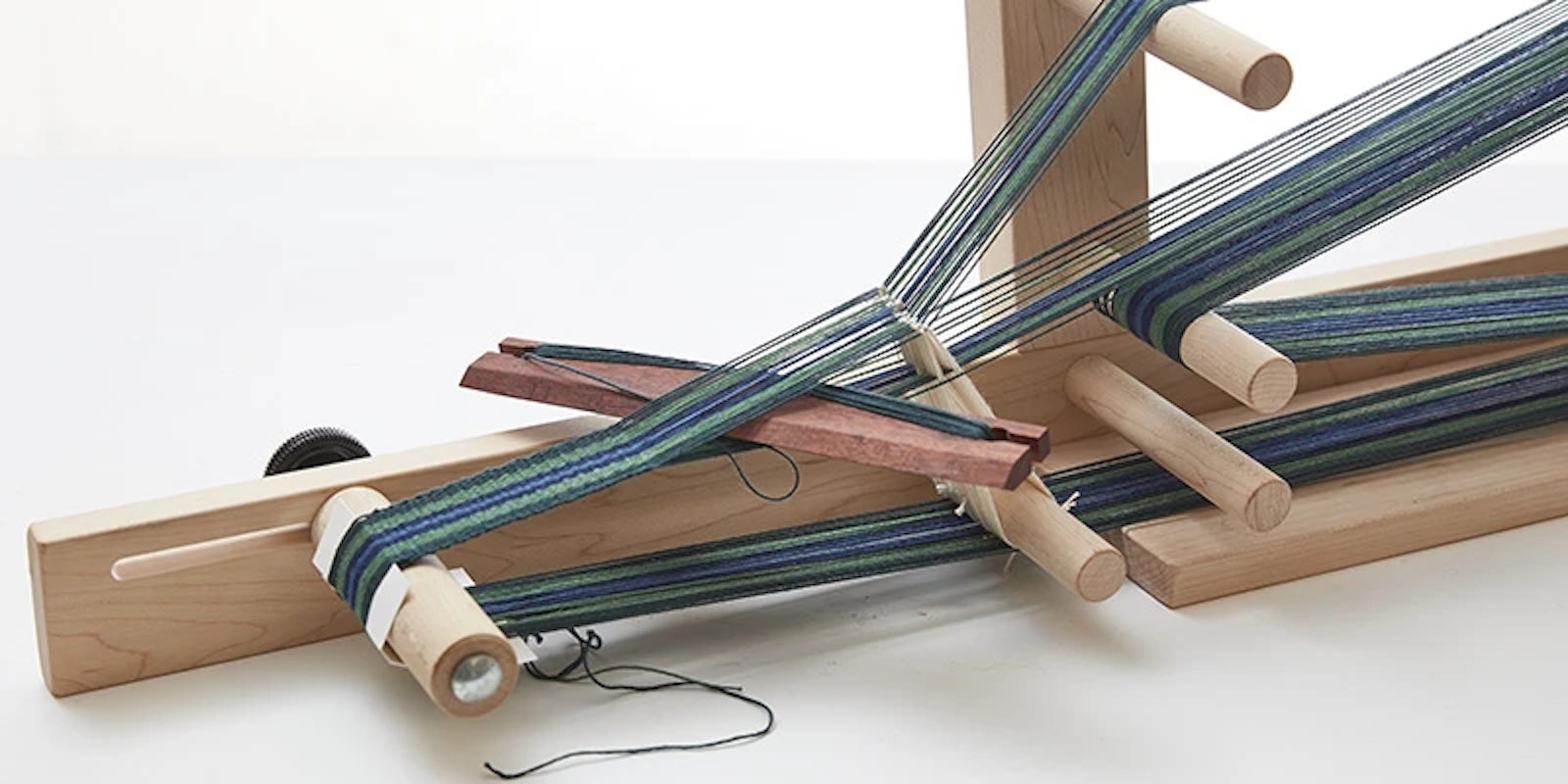 | |
| Honeycomb Towels by Kathleen Farling | |
 | |
| Waffle-Weave Towels by Lynn Tedder |
One time, when I was teaching a workshop in a place that was more “art” oriented than weaving oriented, we teachers were each asked to give a presentation showing our “work,” including visuals and other information about what inspires us.
What constitutes “art” as opposed to “craft” has long been argued. In my personal definition, “art” is not synonymous with artistic or good or beautiful (I think of art as expression—of some emotion or concept or vision). In my weaving life, I don’t identify anything I do as “art,” therefore, even when it does turn out to be beautiful, artistic, or “good.” So when I’m teaching with artists (sculptors, painters, tapestry weavers, etc.) and I have to talk about my “work,” I feel uneasy.
This particular time, we were scheduled to give our talks in the evenings during the teaching week. A different teacher spoke each night after dinner (this could also mean after wine). I decided I would make my talk a kind of satire of an artist’s presentation, applying what I think of as “artspeak” to my “work.” I had with me a collection of dish towels, examples of different weave structures that I was teaching in my workshop. I hung them on the four walls in the room where we spoke, placing them as though they were fine paintings in a gallery.
My plan was to talk about what each one represents and give stories about my inspiration for them. I thought I could make some good stuff up about having been on a trip somewhere and wanting to represent in this dish towel a clash of culture, in that one the serenity of the open sea, or some such. I also thought I could make all this stuff up on the spot.
Of course, when the time came to start talking, with the audience in place and the dish towels surrounding us, all I could think was WHAT WAS I THINKING! (Especially after “wine.”) So instead, I found myself telling the truth. It bugs me that if something the size of a dish towel were called a wall hanging, it would bring ten or twenty times the price of a dish towel—or more! You can walk into a store and buy damask dish towels with jacquard-woven images for under ten dollars each, not much more than what a weaver would have to pay for the yarn used to make one. Weavers, therefore, are aware that out there in the world, their handwoven dish towels are not highly valued. Within our world, however, they take top billing. For most of us, me included, weaving a dish towel is pure joy. And after they are woven, hanging them in the kitchen, using them, giving them as gifts—every aspect of our connection to dish towels is rewarding.
This new eBook, Top Ten Dish Towels, is a tribute to our favorite woven product. Here are ten great towels, mostly one-shuttle weaves, all on four shafts, that are a delight to weave, to admire, and to use. There are waffleweave towels and towels in huck and Swedish lace, honeycomb, twills, M’s and O’s, and summer and winter. Not only will you produce many towels as you use this book and have fun doing it, but you’ll also experience a wide range of weave structures—a win-win-win! You might even choose to use your towels, though I’d rather think of mine as wall hangings. 1111

 |  | |
| Swedish Lace Towels by Vicki Tardy and Towel and Washcloth by Karen Tenney | ||

